Are you that amateur fish enthusiast who needs to know where to put your new fish tank? Selecting the right area is of utmost importance for your friends swimming around in the water. Depending on whether you want to put a desktop tank or a large, impressive centerpiece tank, knowing the correct placement of your aquarium is very important. In this article, we will try to figure out what it takes to choose the perfect location for an aquatic home. With information on tank size and type, lighting, and other environmental variables, we help you decide on the best home for your aquatic animals.
Content Table
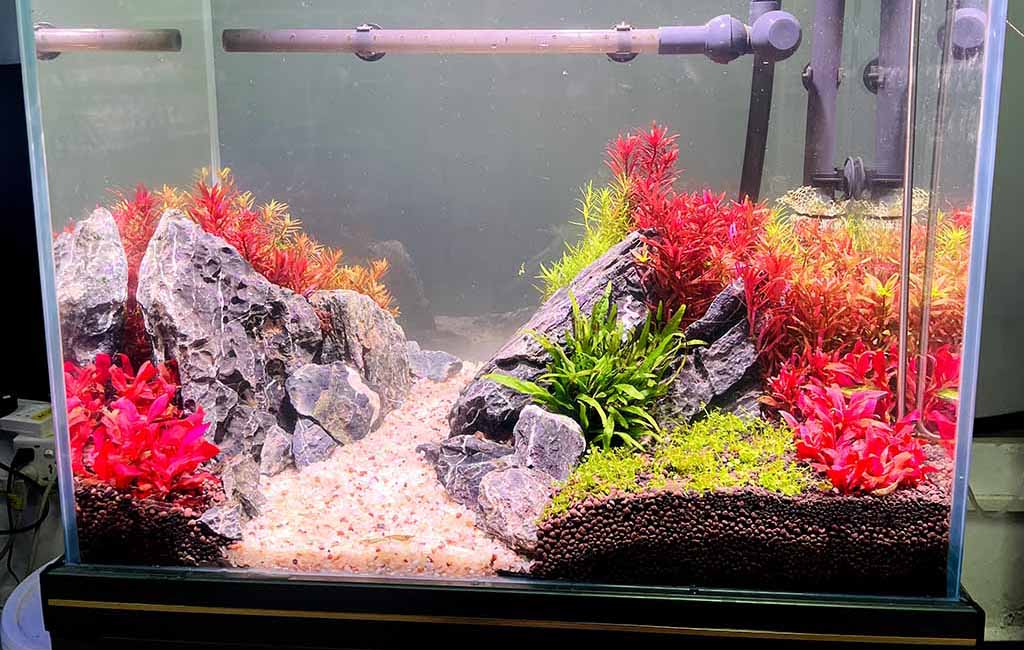
What Size and Type of Your Fish Tank
Choosing the right aquarium size is crucial for the health and well-being of your fish. Here are some popular options for beginners.
- 10-Gallon Aquarium
Ideal for: Smaller fish species like neon tetras, guppies, and small barbs.
Benefits: Easy to maintain and affordable.
- 20-Gallon Aquarium
Ideal for: A wider variety of fish, including small angelfish, goldfish, and dwarf gouramis.
Benefits: Offers more space for fish to swim and grow.
- 29-Gallon Aquarium
Ideal for: A good balance of size and versatility. Can accommodate a variety of fish species.
Benefits: Provides ample room for fish and plants.
- 30-Gallon Aquarium
Ideal for: Similar to the 29-gallon, but often offers a slightly different shape or design.
Benefits: Provides ample space for fish and plants.
Types of Aquariums
Rectangular
Well suited for almost all kinds of applications due to its form. A rectangular base is traditional and versatile, thus right for all sorts of fish and arrangements of the tank. These give enough area for swimming and are quite simple to manage and maintain as well.
Hexagonal
The concept of hexagonal aquariums can be attractive because it is very different from more conventional water tanks. It has a hexagonal base – which appears more natural to your fish and it may be a great talking point to your guests too.
Bow-front
Bow-front aquariums have a convex front wall to offer the most beautiful view of the underwater fauna. This design gives a different feel from just having the bare tank in front of you; it gives a perception of depth and width.
Corner
Corner aquariums are developed to occupy more space as less of a room, such that they are placed at corners of rooms with elegance added. They give an entirely different angle of the underwater kingdom, allowing you to view your fish from different angles.
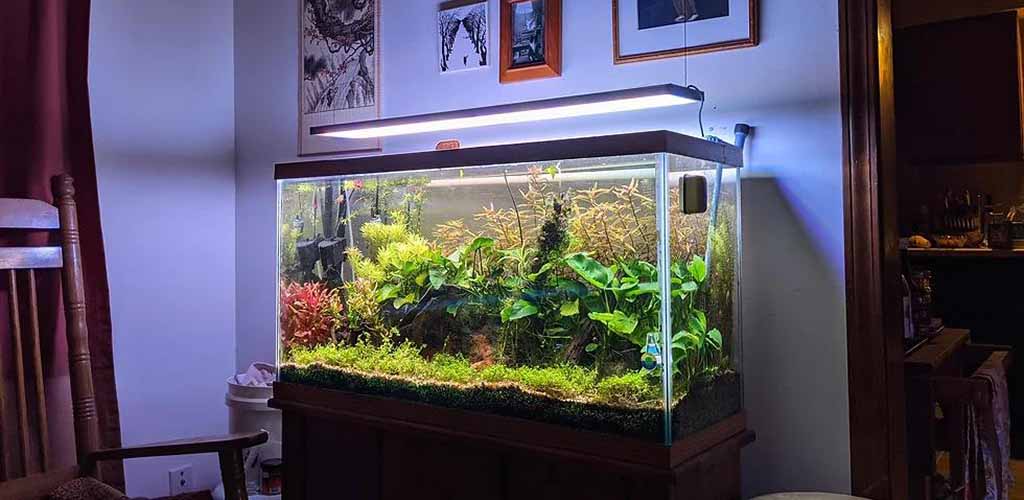
Where to place an aquarium
Where to Place an Aquarium
Indoor Placement
Many of these aquarium varieties can either be placed indoors or outdoors.
Living Room or Dining Room
They also come in handy when placing huge ornamental tanks such as saltwater or freshwater, since they are focal points that define one’s room. Do not expose the system to direct sunlight, to avoid algae and an inconsistent temperature.
Bedroom: It is still possible to find small fish tanks or betta fish tanks here, which give a relaxing atmosphere. The tank must not be positioned near a heater radiator or air conditioning unit, as the heat affects water temperature.
Office: Smaller tanks like desktop tanks can also be effective in increasing the level of concentration and reducing stress. Ensure it is placed on firm and flat ground, also avoid placing the bin near a sunny area or in places which has many people moving.
Kitchen: If there is a possibility of the aquariums being installed on counters or shelves, they can be placed there. However, do not let it get too close to your stove or any heat source where cooking fumes or steam may change the water in your tank.
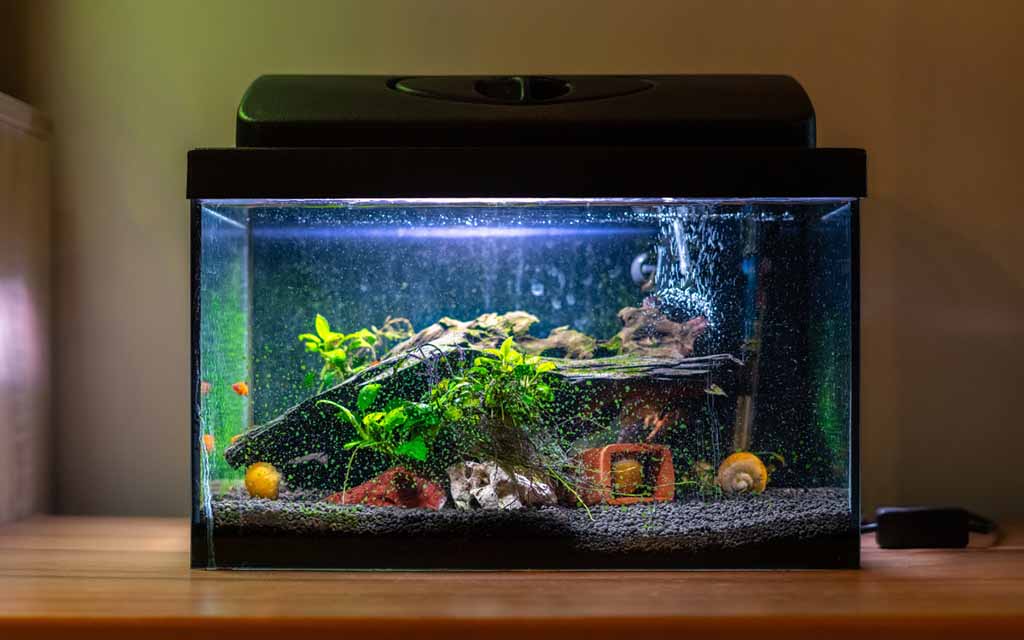
Place an aquarium at home
Outdoor Placement
Suitable for larger or specialized tanks.
Patios or Balconies: Large outdoor tanks or koi ponds can be placed here, provided they are well protected from extreme weather. Ensure there’s adequate shading to prevent direct sun exposure, which can heat the water and stress the fish.
Garden or Yard: For outdoor ponds, such as koi or goldfish ponds, placing them in a shady, well-protected area of the garden works best. The area should have good drainage and shelter from strong winds or heavy rain.
Under a Pergola or Gazebo: Ponds or larger aquariums can be kept in areas protected from direct sun and harsh weather, allowing for a stable temperature environment.
Where Should You Not Put a Fish Tank in Home
Here are some areas in which you should not put your aquarium
- Direct Sunlight: Too much exposure to light brings heat, which adversely affects the fish and promotes the formation of algae.
- Near Heat Sources: Water temperature variability can also be due to radiators, fireplaces, or space heaters.
- Drafty Areas: Drafts create temperature fluctuations that stress your fish as well as put their lives at risk.
- Above Electrical Outlets or Appliances: Water leakage may become a risk factor again.
- In a Bedroom: The noise from the aquarium filter will be disturbing and will interfere with sleep.
- In a High-Traffic Area: Tank disturbances can often create stress for your fish, and this stress implies the need to act to save them.
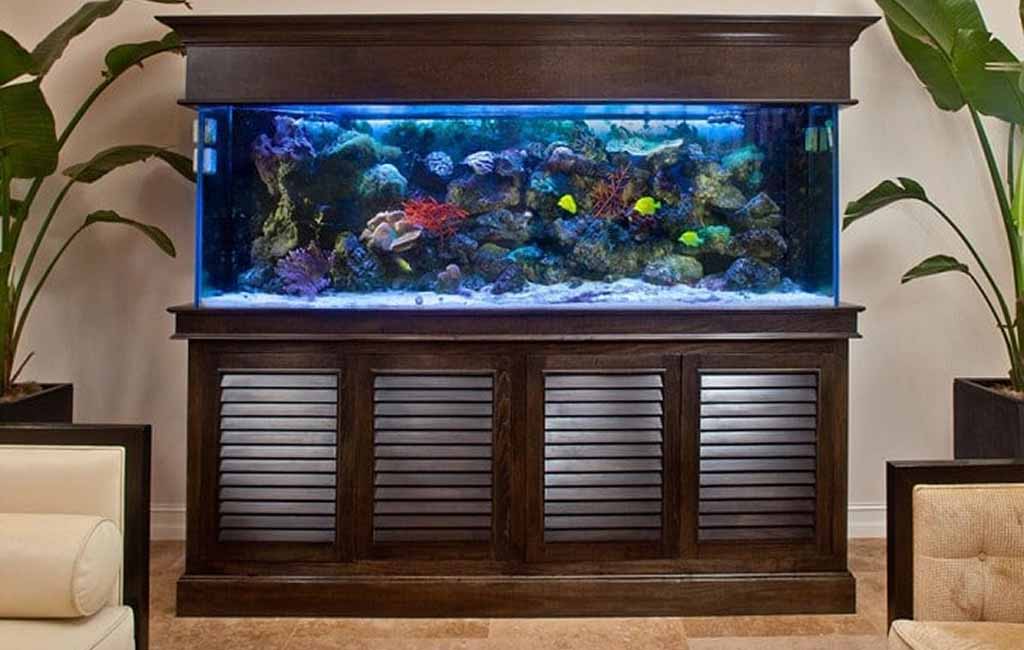
Home aquarium placement
Best Place to Put an Aquarium at Home
Choosing the perfect location for your aquarium is crucial for the health and happiness of your fish. Here are some factors to consider.
Ideal Placement
- Away from Direct Sunlight: Excessive sunlight can cause algae growth and temperature fluctuations.
- Near an Electrical Outlet: This ensures easy access to the aquarium’s filter, heater, and lighting.
- On a Stable Surface: A sturdy table or stand will prevent vibrations and spills.
- In a Quiet Area: Noise can stress fish, so choose a location away from loud appliances or high-traffic areas.
Considering Aquarium Size and Equipment
- Small Aquariums: Smaller tanks are more versatile and can be placed on tables or shelves.
- Large Aquariums: Larger tanks require a sturdy stand and may need additional support.
- Heavy Equipment: Consider the weight of the aquarium and equipment when choosing a location.
Power and Lighting
- Electrical Outlets: Ensure there’s a dedicated circuit for the aquarium to avoid power surges.
- Lighting: Natural light can be beneficial, but avoid direct sunlight. Consider using aquarium-specific lighting for optimal conditio
Decor and Style
- Aesthetics: Choose a location that complements the overall decor of your home.
- Visibility: Ensure the aquarium is easily visible from your preferred seating area.
5. Environment
- Temperature: Maintain a consistent temperature between 72-78°F (22-26°C). Avoid areas with drafts or heat sources.
- Humidity: While humidity isn’t as critical as temperature, excessive dryness can affect water evaporation.
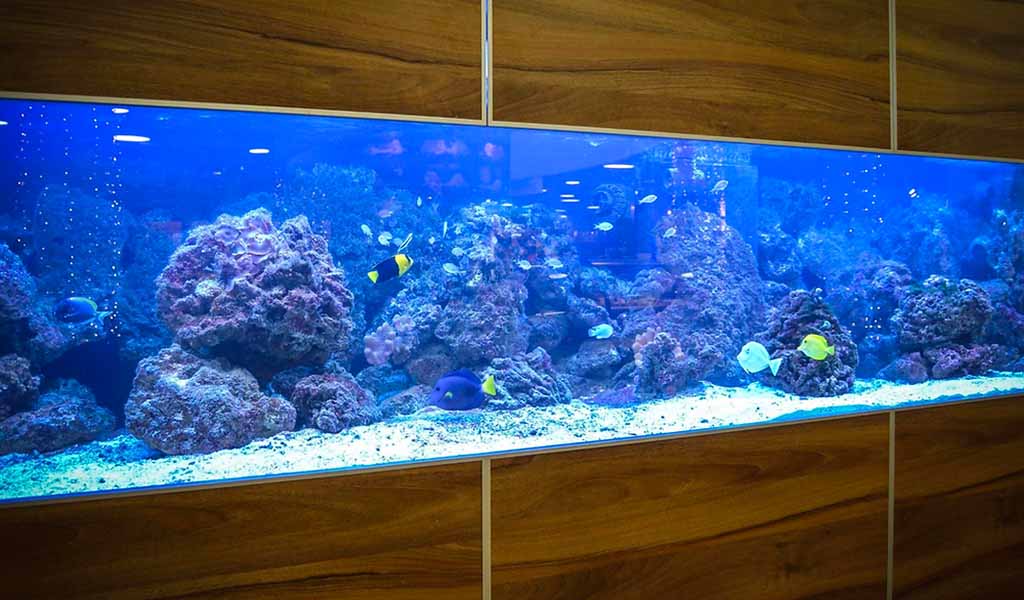
Wall aquariums
Tips Should Be Considered for Aquarium Placement
- The location should also be considered, along with the size and weight of the aquarium. A conventional aquarium can be large and heavy, hence might need the house floor to be reinforced.
- Make sure the aquarium is convenient for daily; cleaning, and feeding of the fish or any other marine life that you have.
- If you have children or pets, ensure that the aquarium is placed in a location where it cannot be easily knocked over.
Closing Remarks
Thus, knowing where to place your aquarium is paramount regarding the health of your fish. Incorporate parameters such as length, width, height, lighting, temperature fluctuations relative to storage and climate, and ease of cleaning and disinfecting. Stay away from direct sunlight, hot surfaces, or places that tend to be congested. If you choose the right location, you will be creating a proper living condition for your water creatures and a great-looking piece for your home.
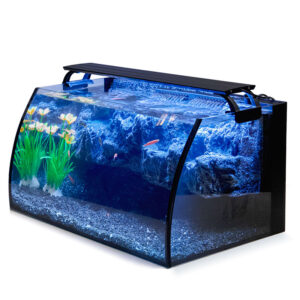
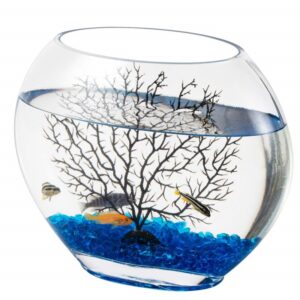
Leave a comment